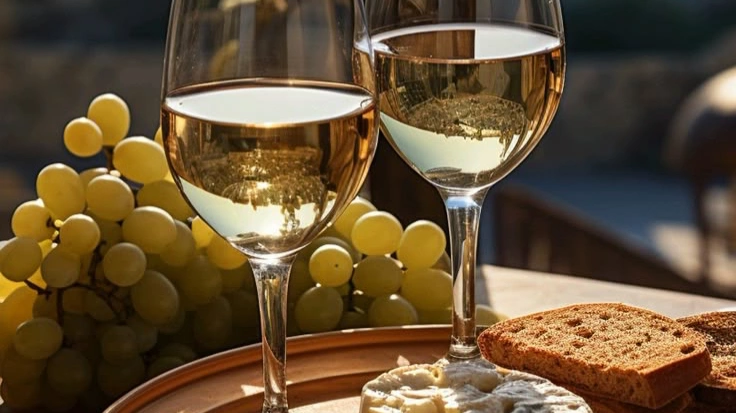Italian Wine: Tradition, Terroir, and Time
Winemaking in Italy is one of the oldest and most respected traditions in the world. Over thousands of years, it has become deeply embedded in the country's culture and identity. With diverse regions, microclimates, and grape varieties, Italian wines offer an unparalleled range of flavors and styles. From Tuscany and Piedmont to Sicily and Apulia, every region brings something unique to the table.
The winemaking process in Italy blends time-honored traditions with modern innovations. It all begins with the grape harvest, which is done either by hand or mechanically, depending on the vineyard and wine type. Choosing the right time to harvest is essential for achieving the desired sugar and acidity levels.
After harvesting, grapes are cleaned, destemmed, and gently crushed. For white wines, the juice is quickly separated from the skins to produce a clear, fresh wine. In red winemaking, the fermentation occurs with the grape skins, which gives the wine its deep color, aroma, and tannins.
Fermentation is a crucial step in which yeast converts sugar into alcohol. This can last from a few days to several weeks depending on the type of wine. Next comes aging, which may take place in oak barrels to enhance complexity and body, or in stainless steel tanks to preserve crispness and fruit character.
Finally, the wine is clarified, stabilized, and bottled. Some wines are further aged in bottles to allow the flavors to mature and integrate.
Italy is home to iconic grape varieties such as Sangiovese, Nebbiolo, Barbera, Montepulciano, Pinot Grigio, and Trebbiano. Each variety, shaped by its terroir, tells its own story through the wine it becomes — a story of land, climate, tradition, and passion.


Winemaking in Italy is not just an agricultural process — it is a profound cultural tradition, a living art, and a vital thread in the fabric of Italian identity. With a history dating back over 4,000 years, Italy stands as one of the world’s oldest and most respected wine-producing nations. Its landscapes — from sun-soaked coastal plains to misty alpine valleys — give rise to one of the most diverse and expressive wine cultures on the planet.
Italy boasts over 20 distinct wine regions, each with its own unique grape varieties, microclimates, soil types (terroir), and winemaking styles. From the rolling hills of Tuscany to the majestic vineyards of Piedmont, from the volcanic soils of Sicily to the sun-baked plains of Apulia, every bottle of Italian wine carries the soul of its region.
🍇 The Winemaking Process: A Balance of Tradition and Innovation
The journey of wine begins in the vineyard. Harvest season, typically from August to October, is a critical time. Many producers still harvest by hand, ensuring only the ripest grapes are selected, while larger vineyards may use mechanized methods. Timing is everything — grapes must be picked at the perfect moment to balance sugar levels, acidity, and flavor.
Once harvested, the grapes are cleaned, destemmed, and gently crushed. For white wines, the juice is quickly separated from the skins to produce a clear, crisp wine that emphasizes freshness and acidity. In contrast, red wines are fermented with the skins and seeds, allowing the wine to extract color, tannins, and aroma compounds that define its structure and complexity.
🧪 Fermentation and Aging: The Art Behind the Science
Fermentation is the magical transformation where natural or added yeast converts the grape sugars into alcohol. This can last anywhere from a few days to several weeks, depending on the grape, climate, and desired style. Winemakers often influence the flavor profile at this stage by adjusting temperature, fermentation vessel (stainless steel vs. oak), and the length of skin contact.
Following fermentation, the wine enters the aging phase, which can last a few months to several years. Wine may be aged in:
- Stainless steel tanks to preserve purity, fruitiness, and freshness
- Concrete vats for thermal stability and micro-oxygenation
- Oak barrels, which add vanilla, spice, and structural complexityThe choice depends on the desired character of the wine.
Some wines — particularly in regions like Barolo or Brunello di Montalcino — require extended aging by law to develop their full expression. Aging can take place in barrels, bottles, or both, allowing flavors to integrate and tannins to soften.
🍷 Bottling and Beyond
Before bottling, the wine is clarified and stabilized, ensuring it is free of sediments and microbiological faults. After bottling, some wines are further aged, while others are meant to be enjoyed young and vibrant. In Italy, even this final stage is done with reverence — reflecting the country’s belief that wine is not just a product, but a story.
🇮🇹 Italy’s Grape Varieties: A Heritage of Flavor
Italy is home to over 500 native grape varieties, more than any other country. Some of the most celebrated include:
- Sangiovese – the backbone of Chianti and Brunello
- Nebbiolo – famed for Barolo and Barbaresco, complex and age-worthy
- Barbera – juicy and approachable, with bright acidity
- Montepulciano – bold, rustic, and full-bodied
- Pinot Grigio – fresh, floral, and globally beloved
- Trebbiano – light, versatile, and widely planted
Each variety reflects the history, soil, sun, and soul of its region. These grapes aren’t just cultivated — they are respected, celebrated, and passed down like family traditions.
In Italy, wine is not only consumed — it is lived. It accompanies meals, marks celebrations, honors the harvest, and brings people together. From the small family-run vineyards nestled on hillside terraces to world-renowned estates producing internationally acclaimed labels, winemaking in Italy is a harmonious blend of craftsmanship, heritage, and passion.
To drink Italian wine is to sip centuries of culture — and to taste the land, love, and labor that brought it into being.
Close